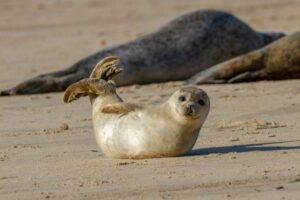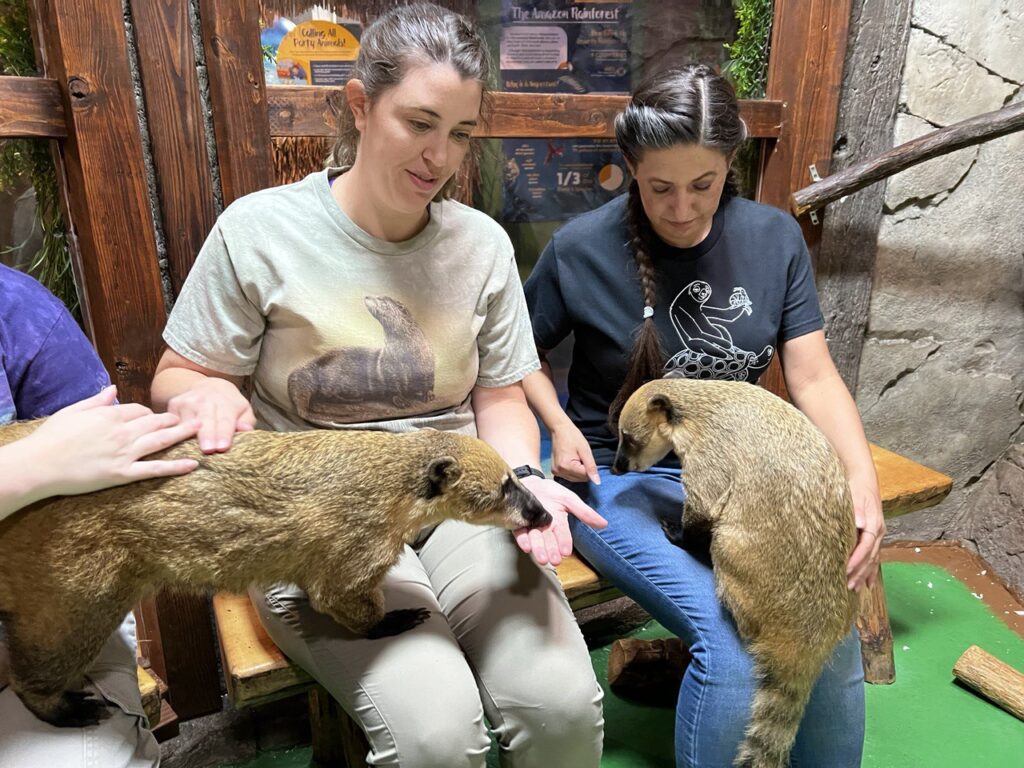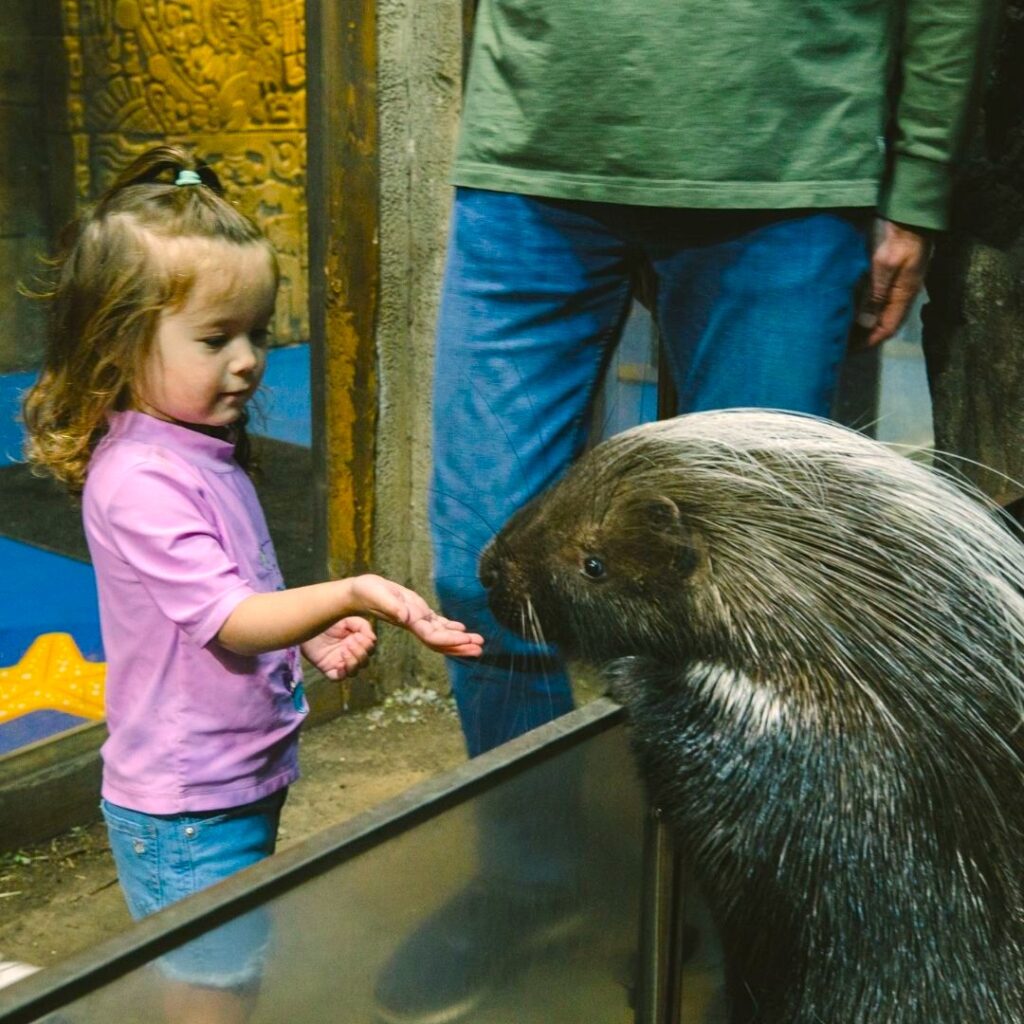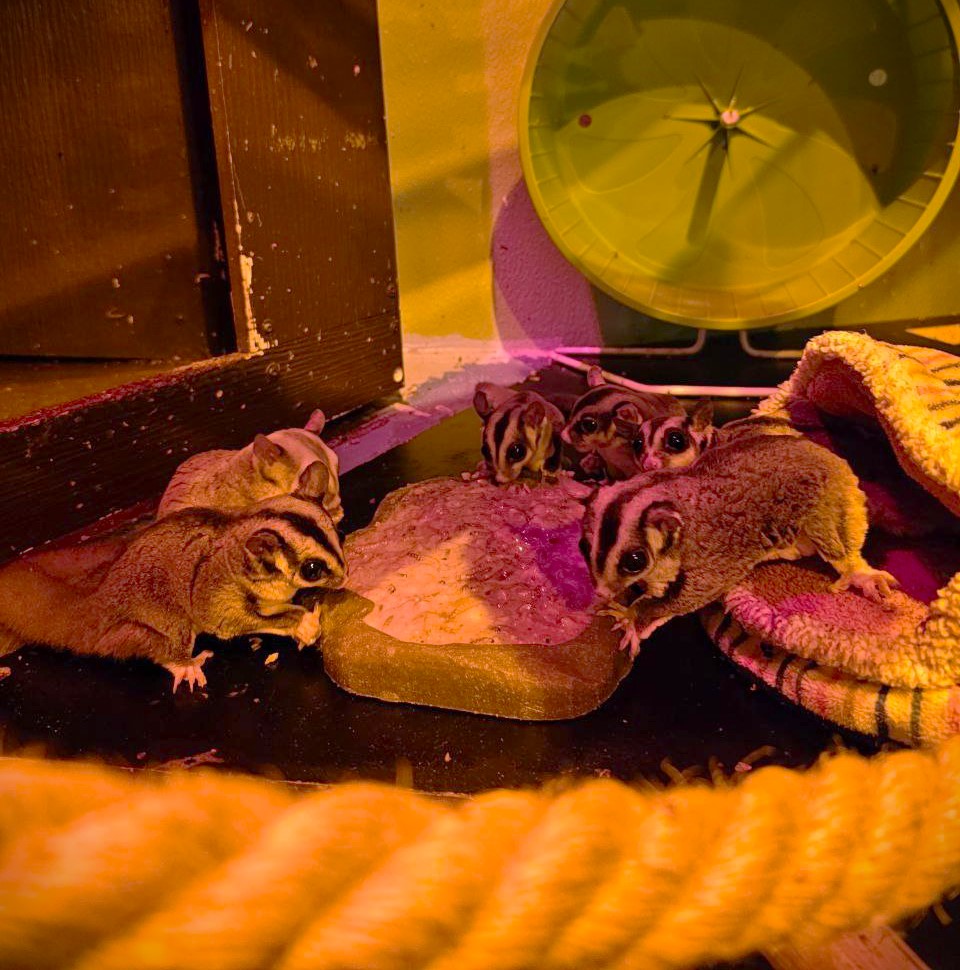Otter vs. Seal: What's the Difference?
Share it on:
There are so many amazing creatures that dwell in the waters of planet earth, and some of may seem so similar in nature, yet they are difficult to tell apart. The seal and otter are two animals that both love to call water “home” and have a face that can tell a thousand stories! Still, these two mammals are very different from one another. Let’s take a look and some similarities, and differences, between these two amazingly fascinating animals!
What is an Otter?
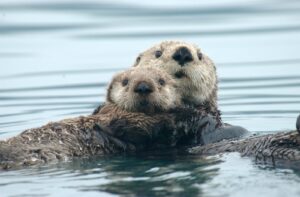
Otters are one of the most fascinating and charismatic marine mammal species. Charming, outgoing, and intelligent, otters are part of the Mustelids family and in the Lutrinae subfamily. Considered a “cousin” of the weasel, otters are known for their elongated bodies, webbed feet, and playful antics, particularly their love of sliding down rocks, banks, or waterfalls. With 13 species around the world, you can find an otter species located on almost every continent!
What is a Seal?
Their scientific name, Pinnipeds, says it all. More commonly known as seals, they are a widely distributed and diverse group of fin-footed, semiaquatic, mostly marine mammals. The word “pinniped” means fin-footed or flipper-footed. There are 33 species of pinnipeds alive today and, they too can be found on every continent on Earth! Though most species occur in cold-water environments.
Otter vs. Seal: Size Comparison
On average, seals are larger than otters. In fact, the largest members of the seal species make otters look quite tiny. Although both seals and otters come in various sizes due to their many species, seals are almost always larger than otters. Here’s a quick snapshot of just some of the otter and seal species size ranges:
Asian Small-Clawed Otter
Asian Small Clawed Otters are the smallest species of otter. They average around 2 feet in length and weigh around 10 pounds. Their tails alone can grow to 24 inches!.
Sea Otter
Sea Otters are a larger species of otter. They have a body length of about 3 to 4 feet and weigh between 40 to 60 pounds.
Giant Otter
Giant Otters are the largest otter species and are very similar to large river otters. They can grow up to 4 feet and weigh up to 70 pounds.
North American River Otter
North American River Otters weigh between 10 pounds to 25 pounds and grow up to 3 feet in length.
Southern Elephant Seal
The largest of the seal species, the southern elephant seal can grow up to almost 8,000 pounds and 20 feet long for adult males, while adult females are a bit smaller at 2000 pounds and 10 feet in length.
Ringed Seal
The most common seal in the Arctic, the ringed seal is the smallest of the seal species. They average a length of 5 feet and weigh about 150 pounds.
California Sea Lion
The most famous in the United States, the California seal lion can be found all along the West coast of North America. Adult males weigh average about 700 pounds and 7 feet in length while females are a bit smaller at 250 pounds and 6 feet in length.
Otter vs. Seal: What Do They Eat?
- Asian Small-Clawed Otters: Feed on frogs, crabs, crayfish, and shellfish. Unlike most other otter species, fish are not an important part of their diet.
- Sea Otters: Feed on crabs, clams, mussels, sea urchins, and abalone.
- North American River Otters: Love to snack on small fish found close to shore banks, as well as amphibians such as frogs, and crustaceans such as crawdads.
- Giant Otters: They are huge eaters! They consume around 10 lbs of food per day. They are purely carnivorous and eat a hefty diet of fish, crabs, small caimans, and small anacondas.
- Seals: Most all seal species are carnivorous. Their diet is composed of meat and protein such as fish, octopuses, lobsters, salmon, eel, mackerel, and squid.
Otter vs. Seal: Lifespan
Sea Otters have an average lifespan of 15-20 years but in captivity, some live over 25 years. Giant Otters have a smaller lifespan in the wild at about 10 years. Asian Small-Clawed Otters will live around 12 years in captivity but lifespan in the wild is really unknown, with an estimated number of 5,000 left in the world. The North American River Otter has an average lifespan of 13 years in the wild, but up to 25 years in captivity.
Ribbon Seals have a maximum lifespan of about 30 years, but they likely live about 20 years.
The maximum lifespan for male Nothern Elephant Seal is age 14; for females it is to age 20. California Sea Lions live an average of 15 to 25 years, however some have lived to 30 years or more in captivity with proper diet and healthcare.
What’s the Difference Between a Seal and a Sea Lion?
Sea Lions:
- Earflaps
- Long hairless foreflippers
- Hindflippers rotate underneath to allow them to walk on land
- Swim underwater using foreflippers like wings of a bird
- Long smooth whiskers or vibrissae
Seals:
- Earholes
- Short, hairy foreflippers and long claws
- Move on land by wiggling on belly and keep hindflippers straight out
- Swim by steering with foreflippers and powering with hindflippers
Are Otters Endangered?
YES! Asian Small-Clawed Otters have a classification of “Near Threatened” on the IUCN Red List while Sea and Giant Otters are listed as “Endangered” as of today. The North American River otter is classified as “Least Concern” meaning they have safe population stability as of today.
Otter endangered status varies by species and location. Habitat loss, water pollution, deforestation, and hunting threaten their survival. They are also captured for the exotic pet trade in some countries and several species are still trapped and killed for their fur.
Are Seals Endangered?
Most seal species are currently not considered endangered, according to the IUCN Red List. There are a few exceptions: The Galápagos fur seal and the Monk seal are both now have an “Endangered” status.
All pinnipeds (seals, sea lions and walruses) are protected in U.S. waters under the Marine Mammal Protection Act, according to NOAA. Some local populations, such as Gray seals in the Baltic Sea, are endangered. The Northern fur seal and Nooded seal are vulnerable. The Caribbean monk seal was declared extinct in 2008.
SeaQuest is committed to protecting our world’s oceans and endangered animals. We focus on how to be proactive in finding solutions. To meet the wonderful sloths that call SeaQuest home, book your visit today at any of the following locations: Utah, Las Vegas, Dallas-Fort Worth, Denver, Sacramento, Minneapolis, Connecticut, Lynchburg, New Jersey, and Atlanta.
~Vince Covino

